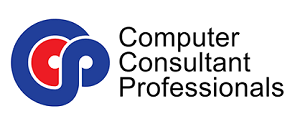Shifting towards an enterprise content management system to manage all your organization data enables you to organize and maintain the vast array of the digital content you create every day in the workplace. In other words, an enterprise content management system is software that helps your organization efficiently index, store, and retrieve business documents and files that develop from the daily operations of the business.
A reliable enterprise content management (ECM) system streamlines business operations, reduces costs, enhances regulatory compliance, improves service delivery through quicker retrieval times, and boosts productivity. But here are the best practices to help you achieve that.
Use consistent naming techniques.
Even the best content management system is useless without a proper naming technique. You should ensure that all the employees and other stakeholders follow a consistent naming guideline so that users do not create their own file names independently. Otherwise, accessing and retrieving files will be more complicated than before.
For instance, you can introduce a naming convention for every department file and have all the members stick to that guideline. A good enterprise content management system provides a template with predefined document names that your staff can use if it suits your business conventions.
Establish proper user access permissions
You also have confidential data that you may not want every employee to access, for example, human resource data with employee information and payroll documents. Restricting access to these types of documents is just as essential to preserving the integrity of your organization.
The best thing about using an enterprise content management system is that it provides a way to restrict user access and establish permission controls. For instance, you can create a user group with pre-set access rights to ensure unauthorized employees do not access critical company files.
Create a retention policy
Suppose you were to audit all your organization’s paperwork; how much do you think would be worth keeping? This is why enterprise content management is valuable. It eliminates the headache of retaining documents that are no longer useful. However, it would be best to have a retention criterion to create the proper document retention guidelines.
For instance, you can create a specific digital file cabinet for retention and put restrictions for modification, archiving, or deletion of the content once it reaches a particular date of maturation. An enterprise content management system also allows you to change file options such as which documents can be archived, copied, or deleted and designate who performs such actions.
A reliable metadata strategy to update folder structure
Metadata makes it easy to retrieve files because it stores them based on what they are replacing the old school storage method.Metadata plays three roles in an enterprise content management system: search, display, and organization.
However, it will not do any good if your tagging system is not managed or the data is not appropriately tagged. Therefore you should adhere to metadata best practices for efficient data organization.
conclusion
By following the best practices for enterprise content management, you can reap its benefits within no time.

